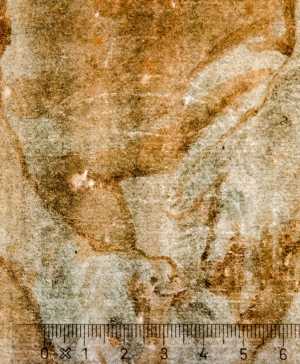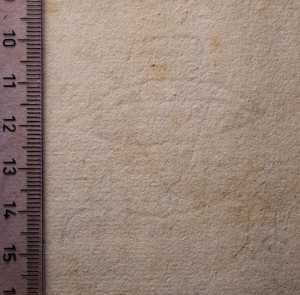Specifications
| Title | Study of a Man Scratching his Ankle |
|---|---|
| Material and technique | Pen and brush and brown ink, heightened with white, on green prepared paper |
| Object type |
Drawing
> Two-dimensional object
> Art object
|
| Location | This object is in storage |
| Dimensions |
Height 301 mm Width 208 mm |
|---|---|
| Artists |
Circle of:
Cigoli (Ludovico Cardi)
Previously attributed: Anoniem Circle of: Barocci (Federico Fiori) |
| Accession number | I 137 (PK) |
| Credits | Loan Stichting Museum Boijmans Van Beuningen (former Koenigs collection), 1940 |
| Department | Drawings & Prints |
| Acquisition date | 1940 |
| Creation date | in circa 1580-1600 |
| Watermark | cardinal's hat (50 x 50 mm, upright, on P4 of 7P, vH), viewed with IRP (transmittent light) |
| Inscriptions | 'M. Agnolo da Carravaggio manpp.a' (verso, top, pen and brown ink), 'D.18,-' (verso, bottom, pen and brown ink) |
| Collector | Collector / Franz Koenigs |
| Mark | anonymous (L.2084), F. Koenigs (L.1023a deest) |
| Provenance | anonymous (L.2084); - ; Franz W. Koenigs (1881-1941, L.1023a), Haarlem, acquired in 1926 (Italian, c. 1700); D.G. van Beuningen (1877-1955), Rotterdam, acquired with the Koenigs Collection in 1940 and donated to Stichting Museum Boijmans Van Beuningen |
| Exhibitions | Rotterdam 2009-2010 (coll 2 kw 5) |
| Internal exhibitions |
De Collectie Twee - wissel V, Prenten & Tekeningen (2009) |
| Research |
Show research Italian Drawings 1400-1600 |
| Material | |
| Object | |
| Technique |
Prepare
> Prepared
> Shaping techniques
> General technique
> Technique
> Material and technique
Prepare
> Prepared
> Shaping techniques
> General technique
> Technique
> Material and technique
Highlight
> Painting technique
> Technique
> Material and technique
|
| Geographical origin | Italy > Southern Europe > Europe |
| Place of manufacture | Venice > Veneto region > Italy > Southern Europe > Europe |
Do you have corrections or additional information about this work? Please, send us a message

























